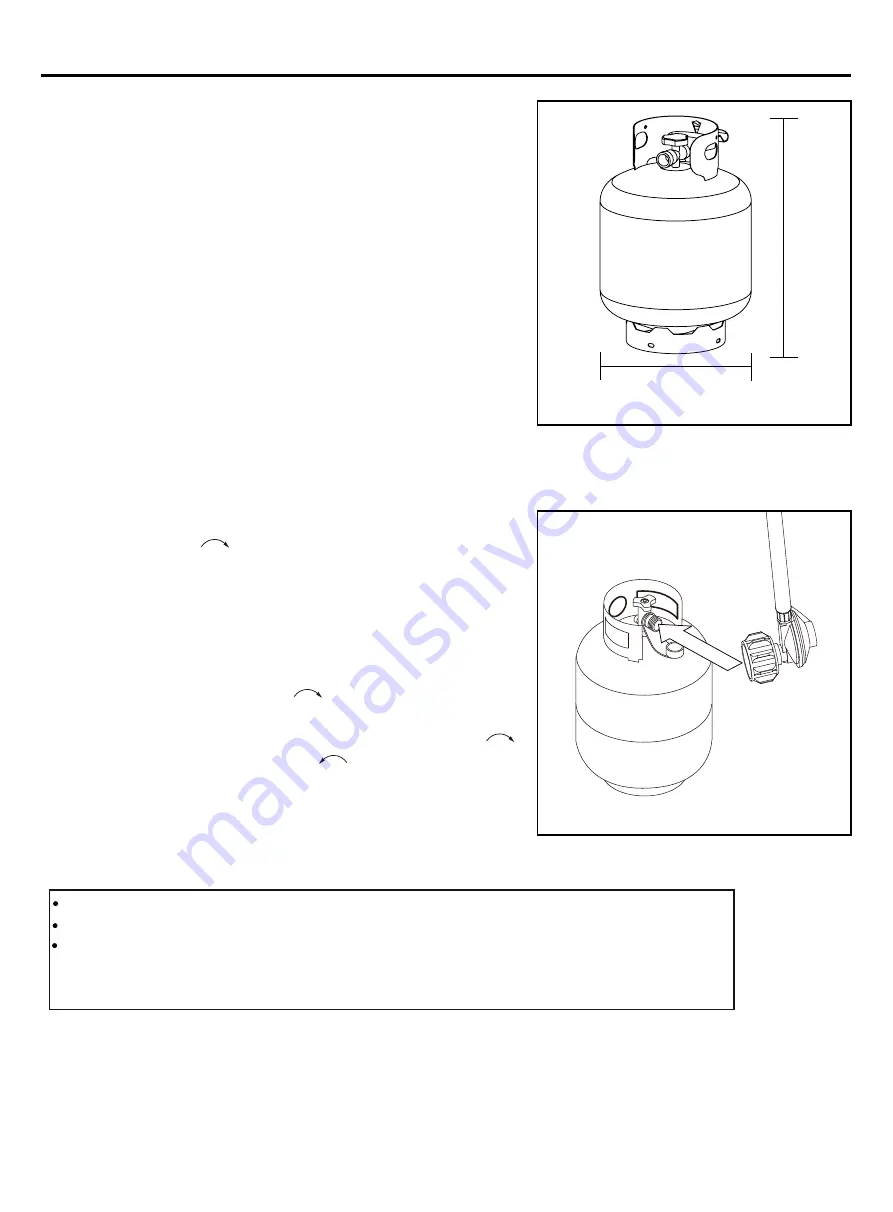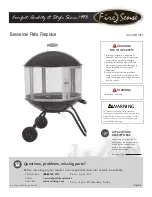
12
ASSEMBLY INSTRUCTIONS
Do not store a spare LP-gas cylinder under or near this appliance;
Never fill the cylinder beyond 80 percent full;
Place the dust cap on the cylinder valve outlet whenever the cylinder is not
in use. Only install the type of dust cap on the cylinder valve that is provided with
the cylinder valve. Other type of caps or plugs may result in leakage of propane.
A dented, rusted or damaged propane cylinder may be
hazardous and should be checked by your cylinder
supplier. Never use a propane cylinder with a damaged
valve connection.
The propane cylinder must be constructed and marked
in accordance with the specifications for LP gas
cylinders of the U.S. Department of Transportation
(DOT) or the standard for cylinders, spheres and
tubes for transportation of dangerous goods and
commission, CAN/CSA-B339.
The cylinder must have a listed overfilling prevention
device. The cylinder must have a connection device
compatible with the connection for the appliance. The
cylinder used must include a collar to protect the
cylinder valve. Never connect an unregulated propane
cylinder to the heater.
Standard 20 lb. tank
12.2 in. / 31cm
17.9 in. / 45.5cm
The knob on the LP tank must be closed. Make sure that
the knob is turned clockwise to a full stop. The
cylinder supply system must be arranged for vapor
withdrawal. Check that the control knob on the control
unit is turned off. Hold the regulator in one hand and
insert the nipple into the valve outlet. Be sure the nipple
is centered in the valve outlet. The coupling nut connects
to the large outside threads on the valve outlet.
Hand-tighten the coupling nut clockwise until it comes
to a full stop. Firmly tighten by hand only.
To Disconnect:
Fully close the tank valve by turning
clockwise. Turn the coupling nut counterclockwise
until the regulator assembly detaches.







































